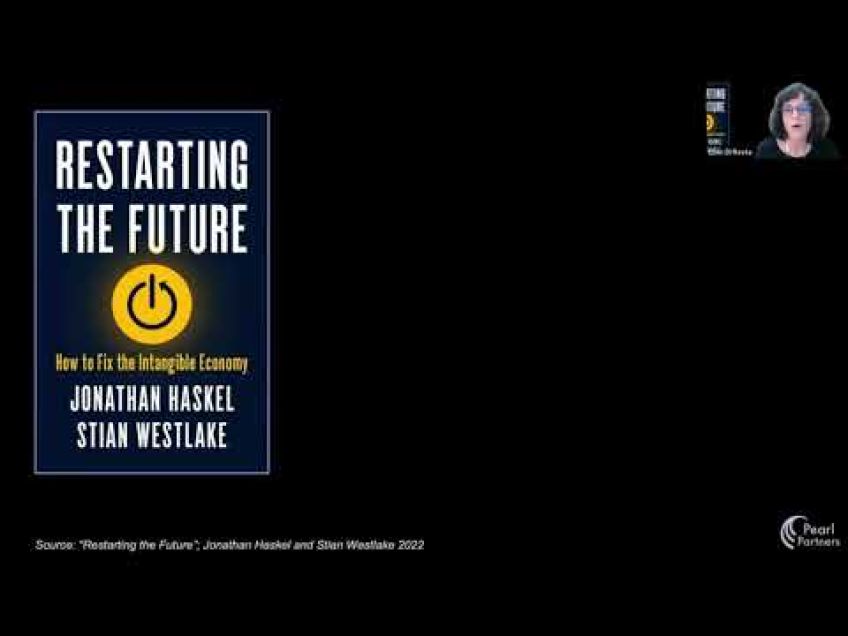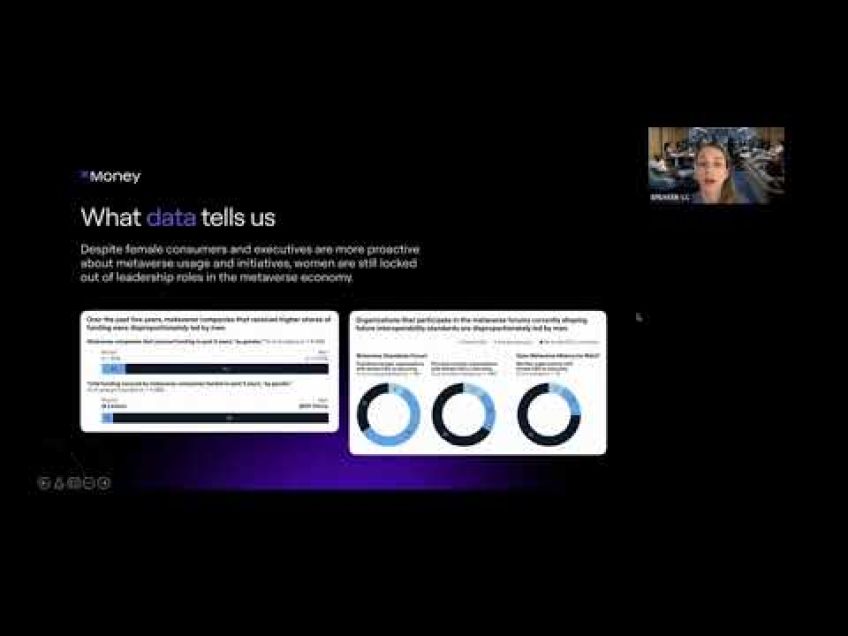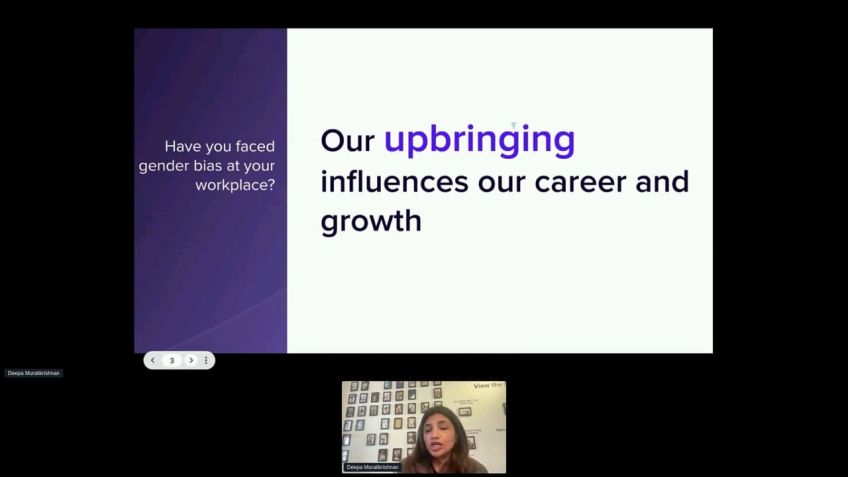Gender Inequality is a $28 trillion problem
Reviews
Recalibrating the Gender Gap in the Technology Space
In the 21st century, gender inequality in the workforce, especially in the technology sector, continues to be a prevalent issue with far-reaching implications. The gender gap is not merely a moral dilemma but an economic opportunity cost that necessitates urgent attention. Significant economic benefits could stem from gender equality in the workforce, including a potential boost to global GDP. This article will explore the significance of this issue, the challenges, and potential solutions, based on remarks made by Dan, Senior Director of Marketing at Ping Identity.
Economic Implications of The Gender Gap
Women constitute essentially half of the world population. Despite this, they remain glaringly underrepresented in the workforce. The scope and magnitude of this problem are immense, extending beyond moral considerations. Understandably, the gender gap issue has become a central conversation, whether in formal corporate board meetings or casual water cooler chats.
Shockingly, a gender-biased workplace is not only a missed moral obligation but an overlooked economic opportunity. Increasing gender equality in the workforce can substantially boost global GDP, especially in developed countries.
An equal gender representation in the workforce is synonymous with increased annual GDP growth. The economic impact of closing the gender gap can potentially amount to an added $28 trillion to the annual global GDP by 2025, equivalent to the combined Chinese and U.S economies. Achieving this end requires affirmative measures and strategies focused on gender equality. A balanced workforce, split equitably between men and women, is not a utopian concept; it is an attainable reality with the right strategies in place.
Dealing with the Gender Gap in Technology
Despite the transformative advancements in technology, be it automation, artificial intelligence, or robotics, women’s economic empowerment has barely made progress. This disheartening reality does not correspond with the technology sector's growth, which continues to outpace the overall rate of employment globally.
Technology is a crucial determinant of the future, redefining every aspect of modern life, from the workplace to our homes. The underrepresentation of women in tech not only inhibits their success in the industry, but it leads to a lack of diversity, limiting career opportunities, mentorship, and fostering unconscious gender biases in company culture.
Solutions to Increase Women Participation in the Technology Sector
- Encouraging Young Girls to Pursue STEM: The essence of altering the gender gap narrative begins with ensuring girls have equal access and opportunities in STEM (Science, Technology, Engineering, and Math) studies. Adequate encouragement and support will instill resilience, perseverance, and ultimately, success.
- Revise Hiring Practices: One practical strategy to achieve gender balance in the workforce is hiring someone who doesn’t look like you, symbolizing diversity. Besides, mere gender aspects of diversity, other measures, including age, cultural background, and physical abilities, are integral to forging a holistic diverse workforce.
- Establish More Tech for Good Initiatives: Women, by nature, tend to be more compassionate and empathetic and are inclined to help and make a significant difference. Establishing initiatives that integrate technology to bring about positive changes will inevitably attract more women to the tech sector.
The realization of gender equality in the tech sector (and beyond) is not just a moral necessity, it's an economic urgency. It's not a task left to women alone; it requires the collective effort of all individuals and organizations. Reducing the gender gap in the workforce may be a slow burner, but it's a fight worth fighting.
Video Transcription
Hi, good morning. Good afternoon, good evening. Uh mom, welcome to everyone joining this event and also this session. Uh I'm Dan and I'm a senior Director of Marketing at Ping Identity. And the topic that I wanted to speak about today is something that is close to our hearts.
And that's why we are here with Anna and the brilliant team uh that have organized this event. It's about recalibrating the gender gap in the workforce and more so in the technology space. And when I think of it, you know, not only are the moral issues at large, but I think there's also an economic opportunity cost uh that should propel us to bridge this gender gap. So we can then start seeing more women in leadership positions, more female CEO S across the Fortune 500 companies. So um if you think of the world population, it's a 5050 split between male and female. And then I think to myself, why is it that the ratio is not the same when you look at our workforce, there are many, many, many underlying factors. So let's look at why um the gender gap conversation, you know, it's so prevalent. It's part of the board conversation. It's a water cooler chat. It's something you talk about within your own family. It's discussed, debated and we need to continue the conversation as the end goal where we are striving to be is nowhere in sight as of now. So to me, you know, the analogy is we are slowly peeling the layers of an onion and we need to keep going at it.
Um And the journey that I take you through today, it's not about gender equity in the workforce being a moral dilemma, which it is, but more so that this is an economic problem and the magnitude of this problem is huge. Now, when we think of it from an economic perspective, what is it that we'll accomplish if we reduce this gap? So reducing gender gaps in the workforce could substantially boost global GDP S. And you know, we'll, there's a slide, well, we'll talk about the economics of this.
Um And also, you know, if you think of regions with the largest gender gaps, they will see huge growth benefits, but also in developed countries, you know, that have uh like just in UK you know, significantly impacted during COVID, uh businesses are running into losses. And this, this is this is despite, you know, the follow schemes uh fiscal support from the government. If we make a focused effort to bring gender equality across all sectors, we will see a direct impact on the annual GDP growth increase. So, moving forward. Oh, uh I, I love this slide. And, you know, if you think of it at every stage, women are challenged, we have to cross many, many more hurdles to reach the same destination as men. Um And I'm sure, you know, you've seen a lot of memes about it. Men and women are the starting point in a race. Men, we can't go to work and this is not all men, I'm not generalizing, but women, you know, there's domestic, there's uh washing machines and uh cleaning and childcare, looking after the elders. Uh but also, you know, driven by the demographics where they were born, you know, the education that's available to them, um the religion, the race, the socio-economic conditions. Now these are pivotal factors that impact the journey girls take to join the workforce as they get bigger.
Um And we in the developed countries, you know, in the developed world, when we talk about gender inequality at length, to think about it, you know, to put it in perspective, this problem is even exponentially bigger in the emerging markets. And why should that matter to us?
Because 70% of the world's population lives in emerging markets. So, you know, in underdeveloped countries such as Sub Saharan Africa, so Sahel, you know, this region that you see on the third uh image uh in a place like this girls will even have a lower chance of standing shoulder to shoulder with a male counterparts. Uh Let's map this journey to understand the implications. So, to think of it, yes. You know, girls and boys, uh they kind of start equally at birth, at least for the first couple of years. Now. I do have to say, you know, there's a caveat to that. It's not true across the board because unfortunately, you know, we are still plagued by things like female infanticide, which is a curse and a fact in many countries. But then it comes to access to education. And then again, you know, if you think about the emerging markets of Sub Saharan African countries, fewer years of schooling compared to other regions. Um I come from India and if I think, you know, um in the rural India that we have, it's the same, you know, it's, it's um I would say it's a gender privilege.
So when poor parents and the privileged folks are looking at, you know, who do I educate? My son and my daughter will always be the son. It just, you know, this is now years of uh cultural and socio-economic burdens that, you know, we are carrying forward. But that gap keeps getting bigger and bigger. And then in a lot of emerging markets, uh what we also find is girls enter early marriage, so they're forced into larger family structures. Um Sadly, in some countries, child marriage is still very, very prevalent and then being married before the age of 18. And sometimes, you know, in the case of child marriage, it could be as young as 1011, 12. Um, and I have a 12 year old daughter. So this just, you know, I sometimes when I think about it, it's, you know, the thought is scary but then that means earlier pregnancies, medical complications, uh lack of access to good health care. And even if they survive this, the girls will find themselves leading with the burden of unpaid work. And to think of it, women on average, spend three extra time on unpaid care work, you know, so cooking, cleaning childcare, looking after the elders in the family, running the household and you know, the million plates that any working woman and working mother is managing at any given point in time.
And then with this widening gap, it's no surprise that there are then less and less opportunities for women in the workforce and then that abyss that increases many fold. So then women in leadership position starts looking like a distant dream and that is why it is so important to keep working on this problem. So these dreams become a reality one day. Um And I think, you know, you've, you've seen this in my uh in my uh abstract for this talk, you know, no wonder there are more men named James than women CEO S in the Fortune 500. And to think of it, you know, the people that will uh influence and shape the future in the workforce then becomes a very male dominated society. And that's the monopoly we need to break and we need to create a more equal society. And this is not just something that, you know, I feel it's not just something that women have to do. I think, you know, men have to equally participate to promote this opportunity. Um What we also find is, you know, gender inequalities have also concentrated women um at the bottom of the global value chain. So you'll find them in the lowest paid jobs, peace rate, uh subcontracted work insecure forms of self-employment.
Uh There's little or no access to decent work, social protection. Um And then in contrast, you know, sitting here in England today, I see my world today, you know, being a woman in tech and cybersecurity and you see the technological developments and advancements, you know, I'm surrounded by, we are fired by automation, artificial intelligence, robotics, cloud internet, and this technology is transforming the world of work.
And yet in parallel, we still haven't made progress with, you know, women's economic empowerment. So it's definitely a conversation we need to keep having and to think of it, you know, women are half the world's potential and unleashing it will require access to uh decent, good quality paid work as well as gender sensitive policies, regulations, um adequate parental leave, flexible hours so they can have a good work life balance and the economics of this makes sense too.
So let's consider a full potential scenario in which women participate in the economy identically to men and simply put we close the gender gap. So like totally close it. What would this mean? We'll find that it would add up to $28 trillion annual global GDP by 2025. Um And to quantify this impact, think of it roughly equal to the size of combined Chinese and us economies today. That's how big this opportunity is. Now, the economic impact of gender parity is definitely vital. Um And if the moral issues don't move some folks, hopefully the economics will, if we don't put measures in place to make sure that we are providing uh an equitable workforce split between men and women, it's like leaving money on the table. So if you don't put the strong measures to, you know, bring equality, um you will lose out on revenue eventually. Now, when I think of my team, you know, there's a 5050 split which is yes gender-based. But then, you know, there's I'm also very conscious about our hiring practices. So other than gender, um there are other measures of diversity and inclusion as well that we focus on. Um And unfortunately, I know it's 2021 we are still talking about this. So this issue is a slow burner. Um but we, you know, we need to work on this and even after decades of progress uh made to, you know, making women equal partners with men in economy and society. The gap is still there.
But what I'm trying to say is, you know, if the economic outcomes as stated here, you know, if this is the ideal world we strive for, um it's a huge change that we're trying to bring about, right? Because there's this historic burden of the role of women in society. Um There's years of culture where the men were the bread, women, you know, the breadwinners, uh women were managing the home. So this journey will not be easy. But we are asking for a change in mindset and a change that has to be driven by humans and human beings are complex and complicated and it comes down to personal choices about the lives that we lead having said that, you know, there will be instances to be very fair where men can also be disadvantaged relative to women.
Um But all in all, you know, to really see that economic opportunity if we don't make the changes now, it means we are losing, you know, the economic growth that it can bring about. And I think when I think of the private sector, you know, they need to have a laser shaft focus on this. They have to put in practices and focus on improving the gender parity between men and women. And that's when we'll see the small changes, you know, trickling in in our society now to think of the world we live in right now. You know, we've uh it's unprecedented times. Uh COVID-19, we all went into lockdown last year in March. We thought, you know, we'll be coming out of it this year. But you know, this the the pandemic continues and then the after effects as well. Um And in the pandemic especially, I think the issue of gender parity is further exaggerated. Um And the reason I say that, and you know, and there are so many conversations about this, the world over businesses that have a larger density of women workforce and negatively impacted. And if I think of this impact is disproportionate, it's challenging. Um But you know, if you look at the food services, travel and tourism, retail and accommodation services l sector, you know, women owned businesses, they've been affected regardless of geography or market type.
Um And the industries that have a more women centric workforce are definitely at a risk from automation across industry. And we'll see this over the next decade, we will see this happen. So what are the measures that we can put in place now to derisk this? Uh And for that, I think we need greater representation of women in the technology sector. So um not saying we take away from the sectors that they're already there, but like we do need to drive that change and you know, build in their profile in the tech sector, but how do we do this? So technology, I mean, you know, this is a women in tech event. Um There are women and men here uh from cloud cybersecurity, you know, all spaces of technology. And why is it important because technology is what will shape the future and yet we don't have enough women in this clu you know, in this skills cluster. Uh technology is important because it holds the keys to what our future will look like, you know, driven by change by innovation, by digital transformation.
Um And to really build that equitable environment, we need a level playing field of influencers, decision makers, change makers, you know, people who bring about change across society and its DNA and that DNA is routed across all industries. To be honest, you know, retail, pharma, ecommerce, banking, insurance fashion, to mention a few, we need it across and yet not just technology. When you look at all of these sectors, we don't have women in leadership, you know, substantial numbers compared to men in these sectors.
Um and diversity in tech, I think is, you know, especially so, so, so important. Um like for example, you know, I'm sure you see this, you know, in, you know, organizations, but there was a report by mckenzie in 2020 that found, you know, diverse companies, they perform better, they hire better talent, they have more engaged employees, uh they retain workers better then companies that don't focus on diversity and inclusion.
And despite all these conversations and measures are being put place and you know, I'm not, I'm not saying it's a sad state of affairs. All I'm saying is, you know, there's like truckloads of work still to be done. So, you know, we need to keep at it. But despite this, you know, women remain widely underrepresented in it roles and what is the root cause for this? So all of this, despite the fact, you know, when we look around the growth of stem jobs has outpaced the growth of overall employment across the globe. Um And despite you know, this being um an office conversation, regional national international conversations about the lack of diversity in tech, women really are the ones that are missing out on this big boom that we're seeing in the tech space. Um And then what are the aftereffects of that? So a lack of representation for women in tech obviously hinders the ability to succeed in the industry. It puts a limit on the cardio opportunities, mentorship sponsorship. Uh It can also lead to, you know, you, you can then also foster unconscious gender bias in company culture and then that leaves a lot of women without a clear path forward. So and then taking that conversation further, women are not only underrepresented in tech, they're also underpaid.
Um And then if I think of the starter world, you know, which is a big part of our economy right now, one in four start ups have a female founder. So all in all the situation is challenging. But the beginning of this journey, it starts by encouraging young girls to pursue stem and to make sure that we, you know, we see them go through this through higher studies. We need to help them build resilience, the need to succeed. Uh perseverance, very important quality, you know, keep at it because the challenges don't die down, the dreams just need to be bigger and then um to end it, um we talk about the Moonshot projects. Uh And today we see Alyssa Carson, uh I love her. I think she's such a strong role model for girls, especially, you know, as we try and uh get them to understand the importance of STEM. Um She's a young girl of 20 who set aside to go to Mars. Uh I think from a young age, um I think she was as old as six or seven. She's always been interested in space. Uh in 2014, she was the first ever person to complete the NASA passport program, visiting each of nasa's 14 visitor centers uh across nine states in America. We need more role models like her for young girls to help encourage them to pursue stem.
The second thing um hire someone who doesn't look like you make it a choice, stick by it, bring in changes to the hiring and hr practices. It's a big, small step that you can take to bring about more gender parity in your team and in your organization. Um when I think of my own life. So I've just started a new job with Ping Identity RVPGM is Emma Maslin. She's this amazing role model who's running an entire business across two mass geographies. A PAC and AA. But I come from IBM. I've spent about seven years over there. I was surrounded by, you know, strong female role models like Michelle Peluso, uh Max Swanson and of course, none other than Ginny Romy who was leading charge of one of the most iconic brands in tech IBM. And Ginny always says comfort and grow, don't go hand in hand, so be uncomfortable. So you can become the next role model in your space in your sector. I think the other thing is women by nature are seed and nurture. They want to help. They have, we have inbuilt compassion, empathy, we wanna make a difference, we wanna make a change. So bring in more tech for good initiatives and you will see a high uptake by the female workforce, um technology to help battle climate change or human trafficking, uh education program, girls who code kind of initiatives. These are just a few examples but our opportunities are endless.
So keep fighting the good fight. Ladies, I'd like to thank Anna and the entire team behind this event who've given us a platform to bring a voice our thoughts, a perspective to a bigger audience. So let's keep these events going. So our voices get bigger and bigger. Thank you so much.






No comments so far – be the first to share your thoughts!